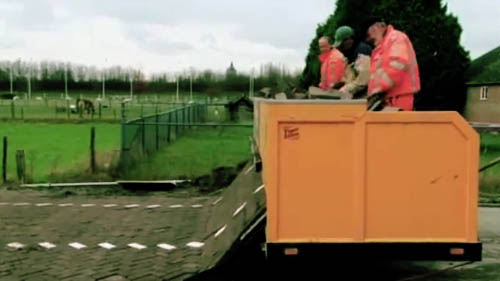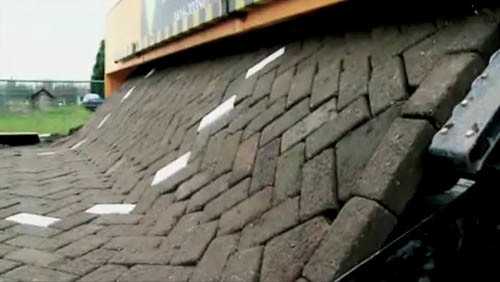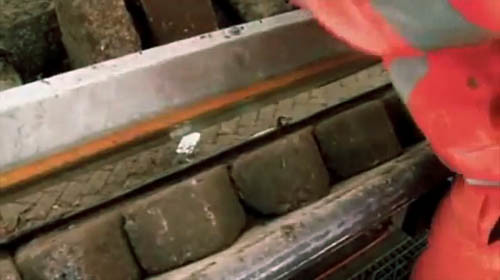


 [Image: From the video, which appears below, showing the laying of so-called Tiger Stone].
[Image: From the video, which appears below, showing the laying of so-called Tiger Stone].As it happens, a new street-printing device—unfurling a geological substrate known as Tiger Stone, as orderly and as easy "as laying laminate flooring"—can neatly place brick roads where there weren't roads before.
Here's a video of the "printer" in action:
After you've watched this footage, of course, it becomes immediately clear that it is inaccurate to refer to this technology as a literal or genuine act of "printing," but it's nonetheless provocative to imagine a world where roads can be created, as if from an inkjet printer, directly from the vehicles that travel on them.
In China Miéville's book Iron Council, readers follow the path of a vehicle called the "Perpetual Train." It operates by laying its own tracks as it moves forward, hauling in the road it travels upon only to unfurl it again seconds later, tank-like, pushing deeper into landscapes that would once have been impenetrable. It is a route that drives itself, moving, as Miéville writes, on "downlaid and uptaken rails," whereby "the roadbed is extended, the tracks laid through, taken up again," always cycling, again and again forward, on "rails, newly renewed," their own context, "meandering."
The road-printing vehicle featured in the video above clearly presents no such utopia, but it does offer at least a domesticated variant on Miéville's mobile perpetuity, bringing roads to distant towns in a single afternoon. What is the geographical status of the road that, itself, can travel?
(Thanks to Jon Bucholtz for the tip!)
Không có nhận xét nào:
Đăng nhận xét